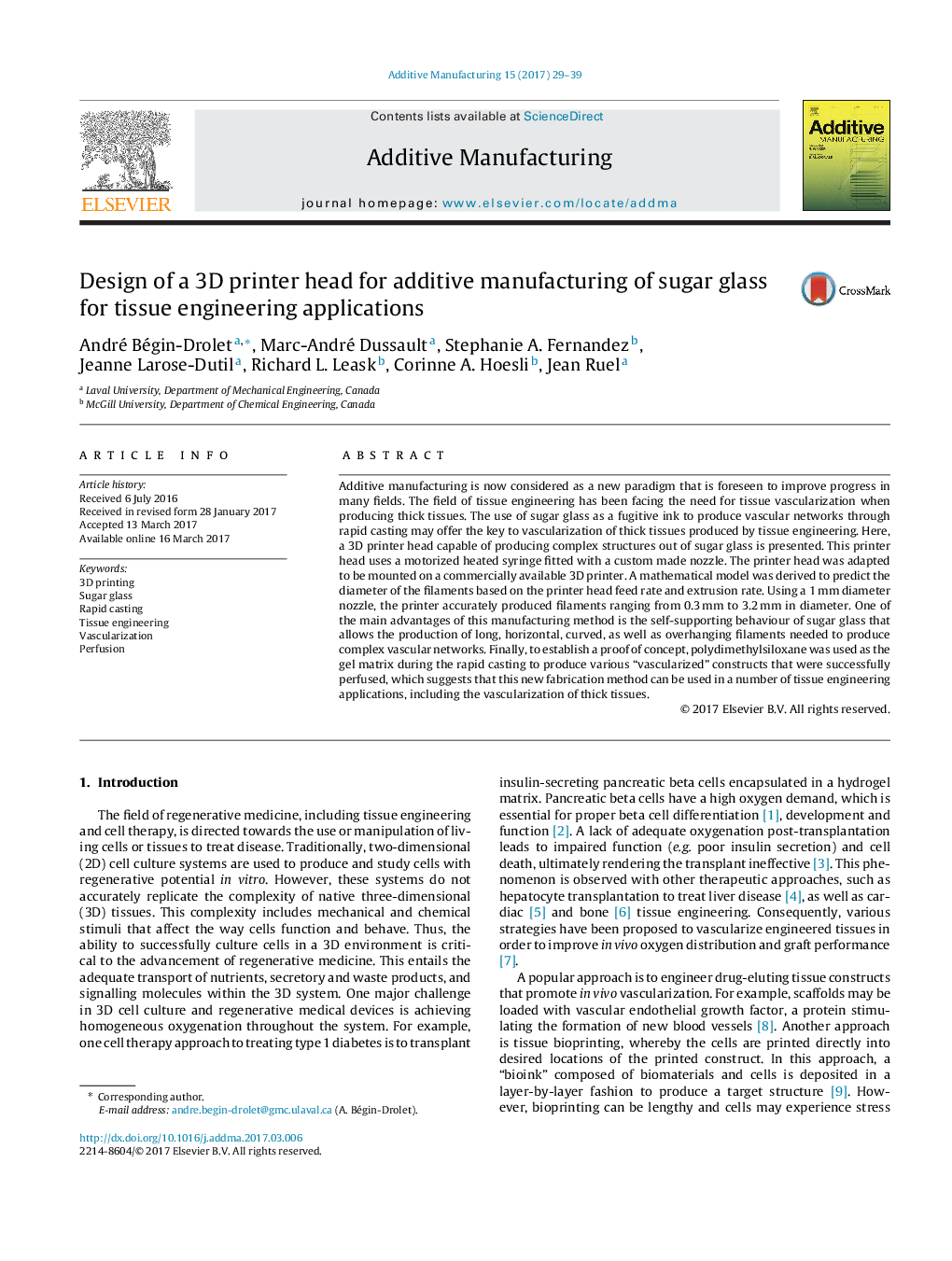| Article ID | Journal | Published Year | Pages | File Type |
|---|---|---|---|---|
| 5020043 | Additive Manufacturing | 2017 | 11 Pages |
Additive manufacturing is now considered as a new paradigm that is foreseen to improve progress in many fields. The field of tissue engineering has been facing the need for tissue vascularization when producing thick tissues. The use of sugar glass as a fugitive ink to produce vascular networks through rapid casting may offer the key to vascularization of thick tissues produced by tissue engineering. Here, a 3D printer head capable of producing complex structures out of sugar glass is presented. This printer head uses a motorized heated syringe fitted with a custom made nozzle. The printer head was adapted to be mounted on a commercially available 3D printer. A mathematical model was derived to predict the diameter of the filaments based on the printer head feed rate and extrusion rate. Using a 1Â mm diameter nozzle, the printer accurately produced filaments ranging from 0.3Â mm to 3.2Â mm in diameter. One of the main advantages of this manufacturing method is the self-supporting behaviour of sugar glass that allows the production of long, horizontal, curved, as well as overhanging filaments needed to produce complex vascular networks. Finally, to establish a proof of concept, polydimethylsiloxane was used as the gel matrix during the rapid casting to produce various “vascularized” constructs that were successfully perfused, which suggests that this new fabrication method can be used in a number of tissue engineering applications, including the vascularization of thick tissues.
